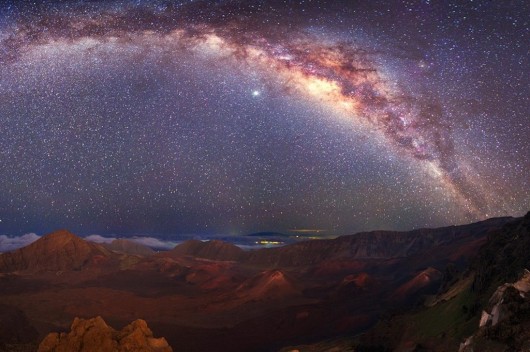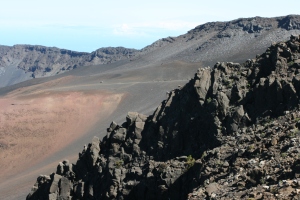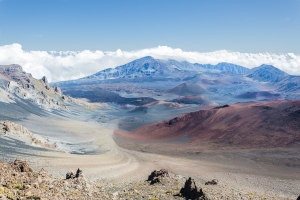It’s said that a large percentage of the American population has never seen the Milky Way – especially young people. It’s just too bright at night in the urban/suburban areas where they live. Of all the generations of mankind that have ever lived, this is a recent, and somewhat sad, phenonmenon.
Fotunately, this is not a problem on Maui. Go anywhere on the island on a clear night where there are no bright lights shining in your eyes and, in the summer, you can see the milky river of light of the Sagittarius arm of our spiral galaxy slicing across the sky or, in winter, the somewhat dimmer Perseus arm. (In the northern hemisphere in summer, we look toward the center of our galaxy; in winter in the opposite direction toward deep space. That’s why the Milky Way looks brighter in summer.)
In the photo above (which I wish I could say I took), Jupiter shines brightly below the arc of the galaxy disk. This is a time elapse photograph, so the Milky Way won’t look as bright to the naked eye; but it still will impress.
The best (and coldest) views of the stars on Maui are from the top of Mount Haleakala. There are serious research telescopes on top of the mountian – not like the world-class telescopes of Mauna Kea on the Big Island, but impressive nontheless. You can’t look through the big scopes, but you can look with your naked eye or, if you have them, binoculars or a small telescope. Even small binoculars will reveal a wonder of stars and (if you know where to look or are just plain lucky) other wonders of the night sky. Even people with very ordinary night vision can see the Andromeda Galaxy with their naked eye, 2.5 million light years away! With binoculars, other galaxies, ghostly nebula, the moons of Jupiter, and brilliant star clusters await those with patience and a little knowledge or luck.
If you’re out on a clear dark night on Maui, stop somewhere dark and look up. You won’t be disappointed.
See our other posts on Haleakala titled Haleakala – The House of the Sun, Haleakala – Come Prepared, and Haleakala – Into the Crater.




